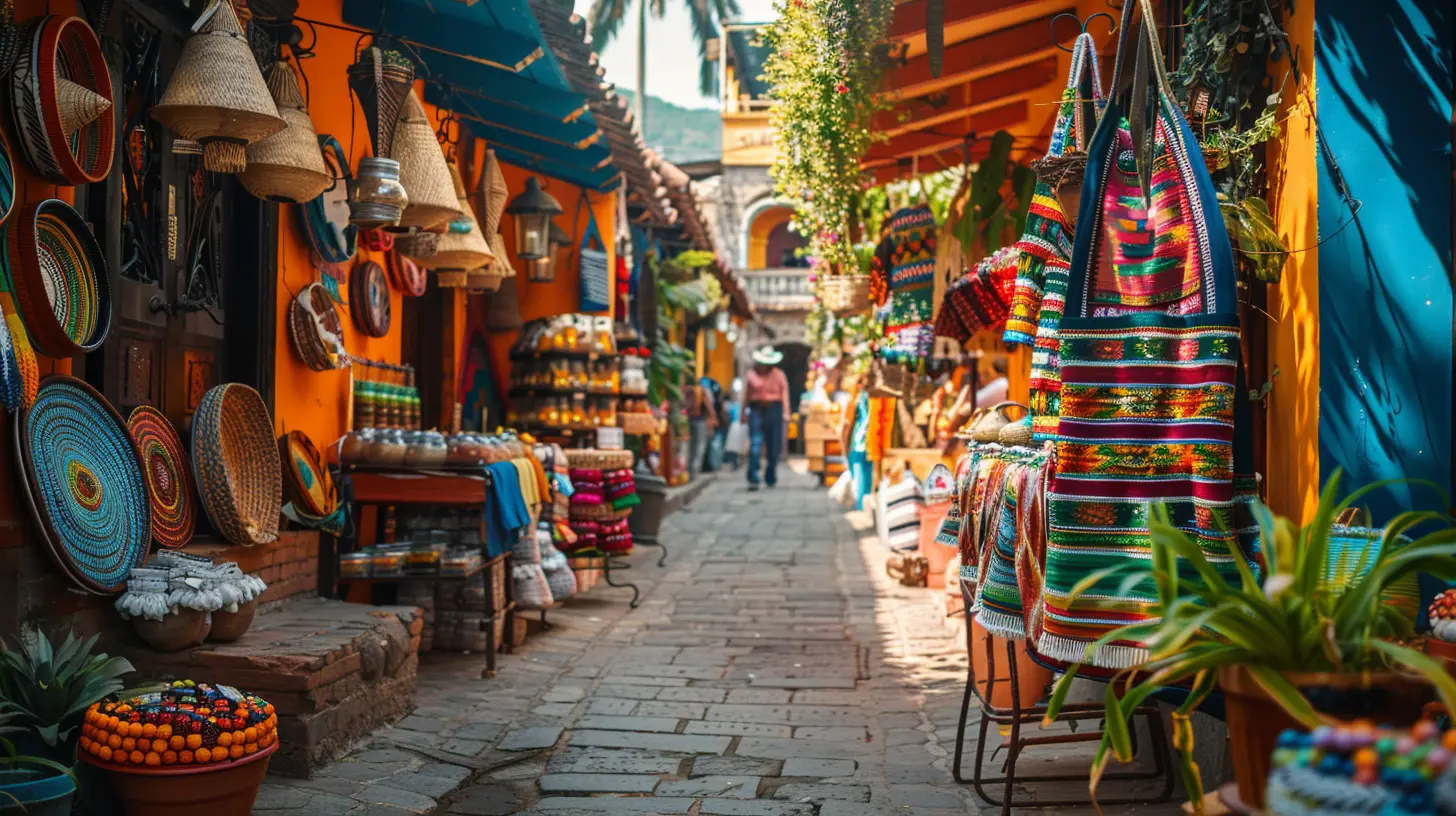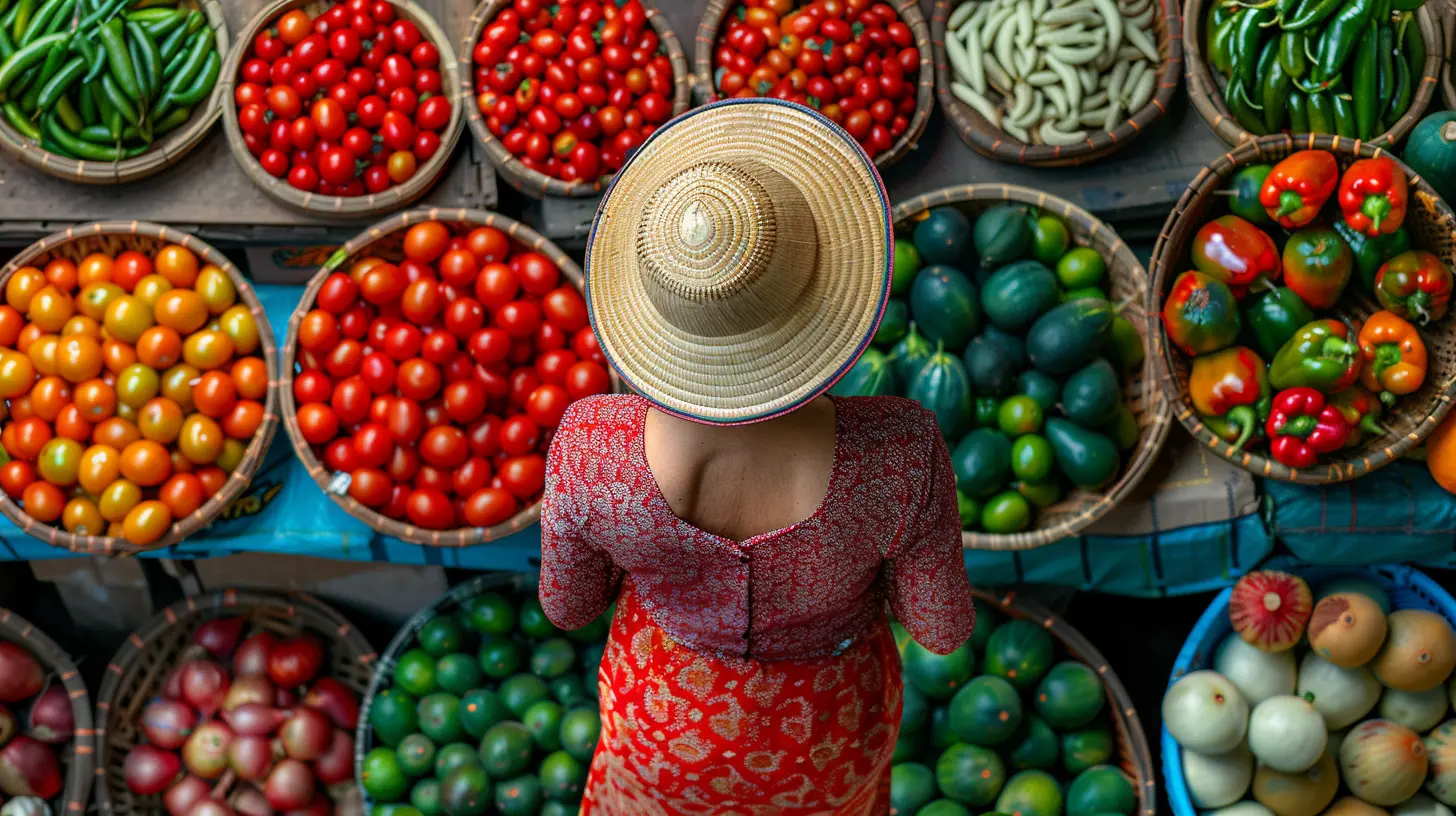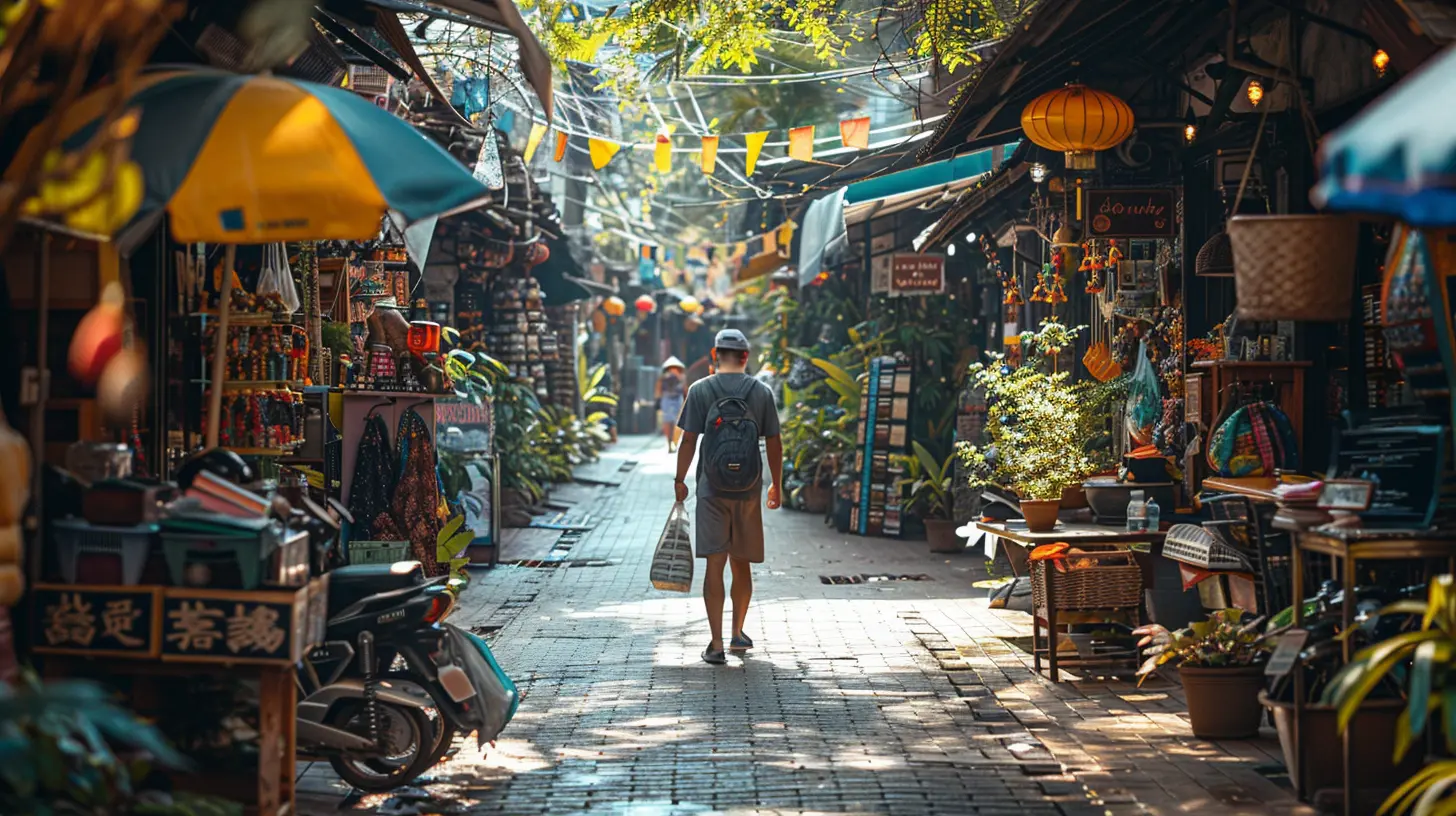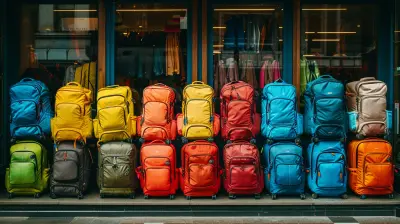13 December 2024
There’s something uniquely thrilling about visiting a bustling market while traveling. The vibrant colors, the blend of distinct aromas, and the rhythmic chatter between buyers and sellers – it feels like stepping into the very heartbeat of a culture. But, before you dive into the chaos of vendors shouting prices or the clattering of street food being cooked, there’s something you need to keep in mind: market etiquette.
Markets are more than just places to purchase goods; they’re a cultural experience, teeming with traditions and unwritten rules that might not be obvious to the unseasoned traveler. In this article, we’ll explore essential market etiquette tips that will help you navigate these lively hubs without stepping on anyone’s toes (literally or metaphorically). After all, a little cultural respect goes a long way in making sure your market adventures are smooth and enjoyable.
So, are you ready? Grab your tote bag, put on your best bargaining face, and let’s dive into the dos and don’ts of international market etiquette!

1. Understand the Market Culture Before You Go
Every market has its own rhythm. Whether you’re perusing handcrafted goods in Morocco, sipping coconut water in Thailand, or picking up fresh produce in a French farmers’ market, the cultural norms can vary vastly. What’s acceptable in one part of the world might be considered rude in another.Research Is Key
Before you even set foot in the market, it’s a good idea to do a bit of research on local customs. For example, in many Middle Eastern and African markets, haggling is part of the fun – it’s expected! But try to pull out your bargaining moves in Japan or fixed-price stores in Germany, and you might get a serious side-eye. In some places, like Latin America or India, prices can fluctuate greatly depending on your negotiation skills.A quick Google search or chat with a local can save you from any awkward faux pas. Plus, it shows the vendors that you respect their culture, which can certainly work in your favor.

2. Bring Cash (And Know the Currency)
While we live in the age of digital payments, where Apple Pay and credit cards dominate, markets are often an exception. Cash is still king, especially in traditional markets or small stalls where payment systems may not even exist. Not only that, but having the correct currency can make the transaction smoother and quicker.Imagine trying to buy some fresh-made street tacos in Mexico, only to realize the vendor doesn’t take cards. Embarrassing, right?
Tips for Traveling with Cash:
- Know the local currency: Familiarize yourself with denominations to avoid fumbling at checkout.- Carry small bills: Asking for change for a high-value note might frustrate the vendor. Break those larger bills at restaurants or hotels beforehand.
- Watch out for exchange rates: If you’re exchanging money at the market, be wary of unfavorable rates. It’s often better to exchange your money beforehand at an official exchange booth or bank.

3. Always Check Before Touching
When you step into a market, your senses will inevitably go wild. The fabrics, the fruits, the ceramics – you’re going to want to touch everything. But wait! Not so fast.In some cultures, it’s considered rude to touch items before you’ve committed to purchasing them. In other markets, it's perfectly acceptable to handle the merchandise, but with care. The key is to observe the vendors and other shoppers carefully – how are they interacting? If in doubt, just ask!
A Golden Rule: Always, always ask for permission before taking that selfie with a colorful stack of spices or sampling a taste from the vendor’s display. Vendors are proud of their products, and showing a little extra respect will make your shopping experience far more pleasant. Respect leads to better interactions!

4. The Art of Haggling: When & How to Do It
Ah, haggling – a traveler’s rite of passage when visiting international markets. But there’s an art to it. Done right, haggling can be fun, engaging, and give you a deeper cultural exchange. Done wrong, and, well...you might offend someone or come across as disrespectful.In many places, haggling is expected (think Morocco, Egypt, or even parts of Southeast Asia). However, there are some general rules to follow to make sure you don’t cross any lines.
Haggling Tips for Travelers:
1. Start low, but not too low. Begin by offering about half or three-quarters of the asking price. However, offering a ridiculously low amount is a surefire way to offend the seller.2. Be polite. Haggling isn’t a battle – it’s a form of communication. Smile, keep the mood light, and don’t take it personally if the seller isn’t interested in lowering the price.
3. Know when to stop. Don’t push it. If the vendor says no repeatedly or seems irritated, it’s time to back down. Don’t ruin your experience over a minor price difference.
4. Have an exit strategy. If things don’t seem to be working out, it’s okay to walk away. Often, vendors may lower the price as you leave. If they don’t? There’s always another stall!
Remember, in some places, like Japan or Scandinavian countries, haggling is not the norm. It’s important to know the cultural expectations before trying to negotiate the price.
5. Dress Appropriately
Markets reflect local cultures, and clothing expectations can differ drastically based on where you are. In some places, dress is more relaxed, while in others, you’ll be expected to cover up out of respect for the culture or religion.Here are a few clothing-related tips:
- Cover up in conservative areas: If you’re in markets within a majority-Muslim country or visiting religious markets, it’s usually best to err on the side of modesty. For example, in parts of the Middle East, covering shoulders and knees is appreciated.- Comfort is key: Markets can be sprawling affairs, with narrow alleyways, uneven cobblestones, and packed crowds. Wear comfortable shoes and breathable clothing.
- Respectful accessorizing: If you’re unsure, pack a scarf or shawl in your bag. If you find yourself overdressed, you can quickly cover up using the scarf.
Being mindful of what you wear isn’t just about fitting in – it’s also about showing respect to the local traditions.
6. Mind Your Space in Crowded Markets
It’s easy to get overwhelmed by the sheer number of people squeezing through narrow streets in a market. You’re excited, you’re snapping photos, you’re checking out everything on display – all good things! But here’s the kicker: personal space.In some cultures, physical proximity isn’t a big deal (I’m talking Italy, Morocco, or India). People get close, lines blur, and personal bubbles shrink. In other places, such behavior might come across as intrusive or rude. Regardless, it’s always good to be aware of your surroundings.
Some Space-Mindfulness Tips:
- Watch your bag/backpack: In tight markets, it’s easy to bump into things or people. Keep your bag in front of you to avoid knocking items over or facing pickpockets.- Step aside when taking photos: Rather than halting the busy flow of the market by stopping mid-walk, step aside or find a quiet corner for those Instagram-worthy shots.
- Don’t block the stalls: If you’re not planning to buy something, move along. Vendors rely on high foot traffic to make sales, so hovering in front of a stall without buying can unintentionally block potential customers.
7. Give Compliments (And Be Curious!)
Vendors take pride in their work. Many of the goods on display in markets, especially in artisan markets, are handmade or represent a labor of love. Whether it’s a woven rug, handblown glass, or a freshly baked pastry, showing genuine interest or appreciation will do wonders for your interaction with the seller.Why Compliments Matter:
- It’s a sign of respect for their craftsmanship and culture.- It opens the door to richer conversations. Ask how something is made or where a certain produce item originates from. It’s a chance to learn more about the culture through the eyes of a local.
And who knows? Your curiosity might earn you a behind-the-scenes look or even a better deal.
8. Practice Sustainable Shopping
In the age where sustainability is growing increasingly important, it’s vital to be mindful of what you're buying – especially in markets. While it’s tempting to buy a large variety of souvenirs, some items should be approached with caution.A Few Sustainable Shopping Tips:
- Avoid endangered materials: Avoid products made from endangered animal products, such as ivory, coral, or animal hides.- Support local artisans: Buying from local artisans not only supports the local economy, but it usually means that the products are made sustainably with local materials.
- Bring a reusable bag: Markets can be plastic-heavy zones. Having a reusable tote or two can help you avoid excess plastic packaging (and markets often love customers who come prepared).
9. Be Ready for Sensory Overload
Let’s be real: some markets are sensory explosions. Between the sights, sounds, and smells, visiting a market can be overwhelming – but in the best way possible.How to Stay Grounded:
- Stay hydrated: In hot markets, particularly in Southeast Asia or the Middle East, carry water with you to stay refreshed.- Take breaks: No rush! Find a nearby café or shaded area, take a seat, and just observe the hustle and bustle for a few minutes.
Final Thoughts
Markets around the world are rich, cultural experiences. They offer a window into the everyday lives of people, their traditions, and their local economies. By following these basic etiquette guidelines, you’ll not only make the most of your shopping experience, but you’ll also show respect to the local vendors and their culture.So, check your bag (twice, to avoid overpacking!), bring some small bills, and get ready for a world of discovery as you explore the vibrant markets of the world.









Amalia Foster
This article offers valuable insights into market etiquette that often goes overlooked. It’s a helpful reminder for travelers to be respectful and mindful of local customs and practices, ensuring a more enriching and enjoyable experience for both visitors and locals alike.
February 8, 2025 at 3:23 PM